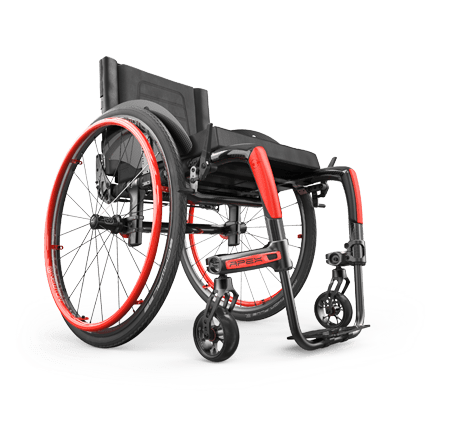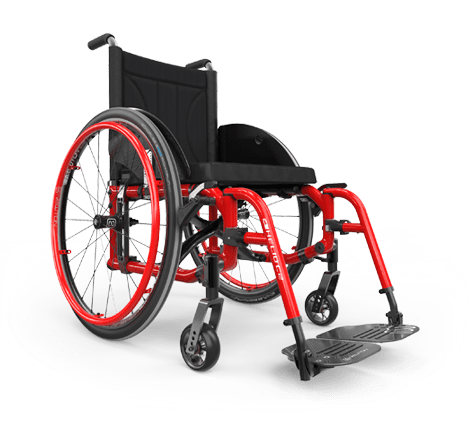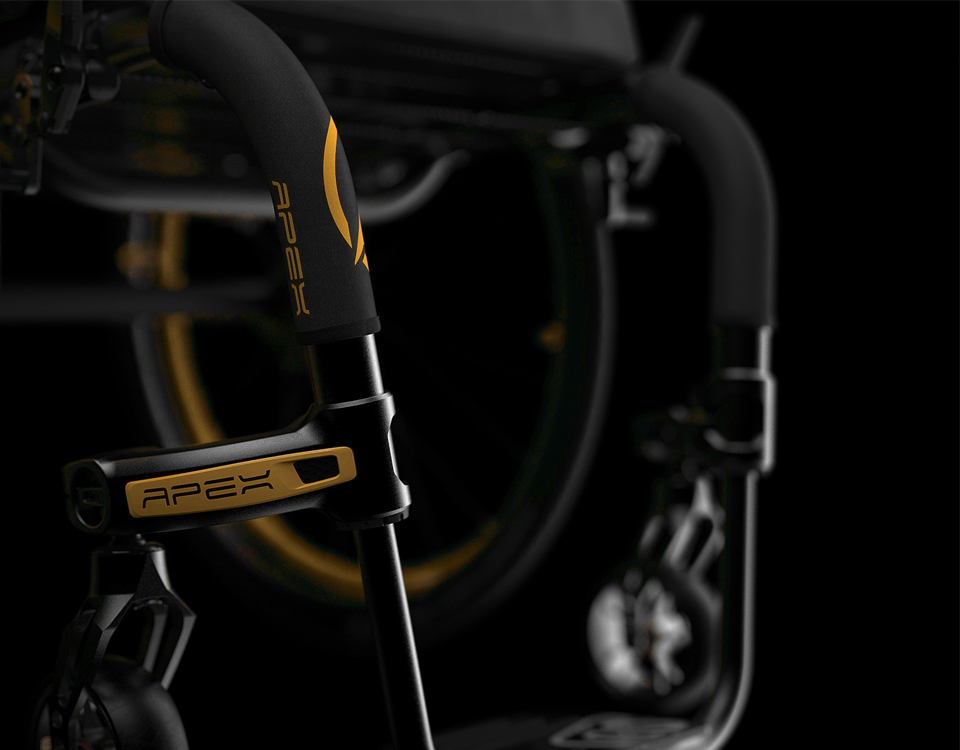On an ultralightweight rigid wheelchair, frame length is standard, set by individual manufacturers, but can be customized based on the individual user’s needs, comfort, and preference for performance.
Many factors determine which configuration choice is best for your individual client. Knowing what is standard, and how custom modifications deviate both in function and mechanics, can help lead the discussion and allow your client to decide on what is best for their unique goals and functional abilities.
An important distinction with frame length is that it is NOT the same as seat depth. This is a common misconception and could lead to decreased performance in the chair if not properly configured. Frame length can potentially affect not only seat depth but should be considered along with front frame angle to ensure proper performance and maneuverability of the chair.
Knowing and understanding how frame length affects other key factors in optimum set up will allow you and your client to choose if a custom frame length is the best solution for their needs.
Key Factors affected by Frame Length:
Size and Weight:
The overall length of the chair will be affected based on custom frame selection either decreasing or adding, changing how the chair performs. The overall weight of the chair can also be affected, with a longer frame length adding additional weight to the wheelchair, which could make it less functionally compatible for some clients.
Maneuverability:
Maneuverability in an ultralightweight manual wheelchair is probably one of the most important features. Making a chair easier to maneuver with optimum set up includes frame length whether standard or custom. The client’s functional abilities along with their goals are the primary considerations in selecting the frame length.
A shorter frame will significantly increase the turning precision of the chair, making it more maneuverable, especially if the chair will be used primarily in a smaller space. A custom frame length in a shortened position is one of the most common selections.
Stability:
A certain amount of stability is important, but not at the cost of maneuverability. However, a stable chair and a maneuverable chair are configured differently, and frame length plays a role in it. Ensuring the chair is balanced enough for the client to complete all activities without losing stability is key. For example, reaching to the floor to retrieve a dropped item without losing balance, or the chair becoming unstable. Adding additional frame length will make the chair more stable, but most likely less maneuverable, especially in tighter spaces.
Position within the Chair:
Depending on the custom frame length selection of lengthened or shortened, the client’s position will be altered, affecting function, maneuverability, and stability. Lower extremity position will be affected as well, including foot placement and knee angle.
Front Frame Angle:
Since the front frame angle does NOT determine the knee angle (because where the client places their feet will determine the knee angle), it WILL determine the wheelchair footprint or the overall length of the chair. Changes in frame length can affect lower extremity position.
Center of Gravity:
Because COG on a wheelchair is measured from the back canes, the position itself won’t change with frame length changes, as those are made to the front of the chair. However, the maneuverability and stability of the chair may change, requiring adjustments to the center of gravity for optimum performance and function.
Since frame length other than standard is a custom request, discussions and trials with the client should take place prior to order confirmation to ensure best fit, function and maneuverability.
The best way to ensure proper fit is to set up a demo as closely as possible to determine what the client’s dimensions are, to best simulate the final outcome. Motion Composites Southeastern Regional Sales Manager Todd Richardson, ATP, with 25+ years in the industry, and as many years as a rigid wheelchair user shares some insights into fine-tuning frame length on your rigid chair for best performance.
“To begin with, don’t add length “just in case,” this can lead to poor performance, and the chair will feel heavier than it is, and can cause shoulder pain, fatigue, and could lead to abandonment of the equipment. Also, if the chair is already 18” deep, don’t add additional frame length just because the client is tall, it can lead to very poor maneuverability and awkwardness in tight spaces. If concerned about length, try adding seat slope. The most common custom frame length requested at Motion Composites is -1.
Understand that ANY changes to the wheelchair configuration will change how the chair feels. ½ Inch of adjustment on the center of gravity is considered a significant change and determines whether the chair will perform as an extension of the user, or feel extremely heavy, so realizing that adding or subtracting 1-2 inches on frame length WILL make a significant impact on performance of the chair.”
Each manufacturer has set standard frame lengths. To ensure a proper fit for your client in a Motion Composites Apex Carbon or Apex Aluminium, request a demo from your supplier or reach out to your local Motion Composites representative by clicking here.







